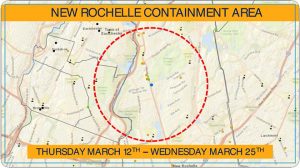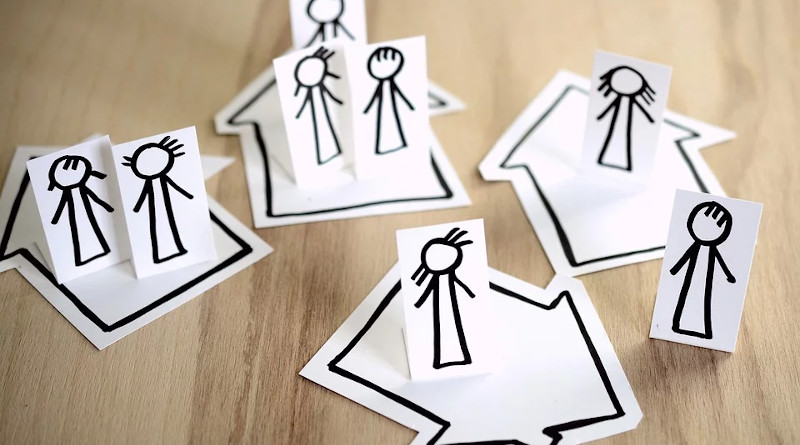New York, San Francisco Response To COVID-19 Redefines Social Distancing In America – Analysis
By Observer Research Foundation
By Nikhila Natarajan
New York City and San Francisco Bay Area’s response to the coronavirus pandemic has transformed the meaning of social distancing for Americans across 50 states. American’s residing in these 50 states are now taking their cues from individual cities’ most aggressive measures, as the White House runs out of bullets and scrambles to slow the economic bloodbath. Deaths in the US, caused by this deadly disease have crossed the 100 mark and coronavirus has spread in all of these 50 states. Some of the most severe containment measures in America so far was rolled out in the week of 16 March, mimicking orders in place across whole Europe.
Personal space has been redefined. At the very sight of an approaching stranger on the street, people abruptly step aside at least six feet. Requests for video interviews get responses saying “I’m social distancing” until you tell them it’s remote. Fears of “the other” have intensified, we’ve all become panic shoppers. America wasn’t like this a fortnight ago.
It’s hard to put a finger on exactly when Americans as a society soaked – in the full impact of COVID-19’s deadly blow, but 12 March marks a dramatic shift in New York’s policy signalling and how people are now practising social distancing across most part of the country. For San Francisco’s Bay Area, that transformational moment came on 17 March when a sweeping “shelter-in-place” order came into force, telling residents to go outside only for absolutely essential tasks.
In Tipping Point, Malcolm Gladwell writes about the “Law of the Few”, where one person or an idea or even the content of communication can convert audiences from hostility to acceptance and “compel them to action”. New York’s early containment action in the New Rochelle suburb and San Francisco’s “shelter in place” order, are emblematic of that construct.
In emergency action on 12 March, the New York Governor announced a one mil e containment area in New Rochelle, a town of less than 100,000 people which is the state’s Ground Zero for COVID-19. The National Guard trooped in to deliver food and clean public buildings. Schools, large gatherings and places of worship shut down in that containment area alone while at least 1,800 schools and businesses in the rest of New York continued to function. Friends met in coffee shops, kids went to school in at least half of America’s states, Broadway was offering tickets at unheard of discounted rates but kept its doors open. Sports teams were practicing together and school boards were sending out long emails justifying why they will remain open, the White House coronavirus task force did not push for school or business closures.

The contradiction of a containment bubble and business as usual co-existing within New York State proved just too much to withstand public pressure. Calls for a complete lockdown rose to fever pitch. Within 72 hours, New York shut down America’s largest school system. Within hours of doing that, restaurants and bars too had to shut down. “On Saturday (14 March), it hit me”, says Alex Gruhin, a Manhattan resident. Gruhin has not left his apartment since 14 March, “except to stock up on dry food”. “If it’s the end of the world and this is what we’ve got to do, it’s what we’ve got to do. I haven’t seen anything like this since 9/11”, he told us over phone.
At the national level, by the time the Trump government rolled out guidelines telling Americans they should stop gathering in groups of more than 10, stay home for two weeks and not dine out, a far more stringent parallel reality had taken hold at the state level. It highlighted both America’s patchwork response across its geography and how its toughest policies are shining the light on the shifting meaning of social distancing. 6 key takeaways emerge from the approach that New York, San Francisco and the leading doctor on the White House task force are bringing to the management and communication of containment in the United States, which are listed below:
1. You can’t do social distancing without closing schools, bars, restaurants and places of worship
Social distancing is all about physical separateness. This saved thousands of lives during the Spanish flu pandemic of 1918 and in Mexico City during the 2009 flu pandemic. After weeks of pushing back against spiralling public pressure to close schools, New York finally decided to close America’s largest public school system on 15 March. As a result, more than a million school children are at home. As of 17 March 38 states have decided to close public schools. In all, at least 74,000 US schools are closed, which means close to 40 million public school students are at home. This includes a vulnerable student population which relies on the school system for essential meals. Within hours of New York’s statewide closures, officials from neighbouring state of New Jersey and Connecticut followed the lead, they decided on shutting down schools and banding together to contain potential virus spread, citing lack of clarity from the federal government.
2. Extreme social distancing isn’t “overreaction”. We need the control freaks.
“When you’re dealing with an emerging infectious disease outbreak, you are always behind, says Dr. Anthony Fauci, America’s top infectious diseases doctor on the White House task force. He urged Americans to understand that the best we can do might look like an “overreaction” but it’s not like that. “So, take a look at the guidelines. Read them carefully,and we hope that the people of the United States will take them very seriously because if people don’t adhere to these guidelines then, they (the doctors) would fail.” The message landed on target. Doctors and nurses on the frontlines are sharing stories about how they have moved into makeshift digs in their garages or attics, others are self-policing and sweating the details as their lives are turned upside down. “It is difficult to see pictures of all the people at bars and restaurants, socialising, making play dates, and ignoring social distancing recommendations when I know my husband and many other healthcare workers are risking their lives to treat more sick patients”, notes Rachel Patzer, an epidemiologist. Fauci says it will be several weeks or maybe longer before the US government knows whether all the drastic measures are having an effect. “Maybe at the end of the day, we’ll see a curve that would have been way, way up if we hadn’t done what we are doing today.”
3. What about kids’ playtime?
Debate continues, but if cabin fever is the biggest downside for kids while parents are working indoors, just roll with it say the doctors. For families, the underlying tension is more about what to do about kids’ indoor time and far less about outdoors time, especially in green spaces. It’s more about how to define what’s essential and what’s not and what to do if your neighbour rings the bell. Without hard coded specifications from the federal government, doctors, parents and teachers are exchanging notes and creating a whole new playbook. When in doubt, the six feet guideline is pushing people to err on the side of maximum caution. Doctors are urging parents not to use public facilities like playground structures, as coronavirus can live on plastic and metal for up to three days.
4. Are the young more resilient? We don’t know enough
Public health officials and doctors are not clear about why children don’t seem to be getting very sick. Experts are saying that’s not good enough evidence one way or the other. “I don’t think we know why kids seem to be less affected. I have read about several theories, but I do not think there is strong evidence for any of them as of today”, says Danielle Ompad, Associate Professor of Epidemiology at NYU School of Global Public Health. Ompad said that as a general approach, those who have children on the borderline for immunosuppression approach the pandemic as though their kids were at high risk. “I do not think we know enough about the virus and the disease it causes to not be cautious”, she said. As some schools close and some remain open, thousands of families have simply begun keeping their children at home.
5. The grim math of ICU capacity driving hard decisions
Grim data are leading the hardest decisions. America has fewer than 100,000 ICU beds and if containment does not work, doctors are projecting that 200,000 such beds may be needed. New York is actively leading communications on data sets like these, projecting that it will need 55,000 to 110,000 hospital beds by the time the virus reaches its peak and talking openly about creating surge capacity. Right now, NY has 53,000 hospital beds, 3000 ICU beds, and the hospitalisation rate is 15-19 percent. While flattening the curve remains the gold standard, the path to that place might rip through the heart of the hospital system. Working backwards from metrics like these have pushed policy makers to announce epic shutdowns. “This is a moment for the history books, it’s a character test. History will ask, what did you do?” says New York Governor Andrew Cuomo.
6. Tell it all, tell it yourself, turn off the fan
Finally, communicating effectively in a crisis is synonymous with leadership. Being the first to turn off the fan is what Cuomo and Dr. Anthony Fauci are doing every single day. They come armed with political finesse and no, they don’t circle the wagons. That comes naturally from protecting the right thing — the people — and these leaders plunge into the deep end of the detailing, not messing with merely the outer edges of the data. Politicians and doctors who have emerged as the leading voices for public communications boldly lay out their assessment of vulnerability. “The looming crisis is not a curve, it’s a wave that’s going to land on the hospital system”, Cuomo said, urging Americans to stay home. “It’s going to get worse before it gets better”, said Fauci. People everywhere want to know how they will be affected and what they need to be prepared for. The answer, a hard sell, is almost an abstraction for modern society: Stay home, with no end date.

